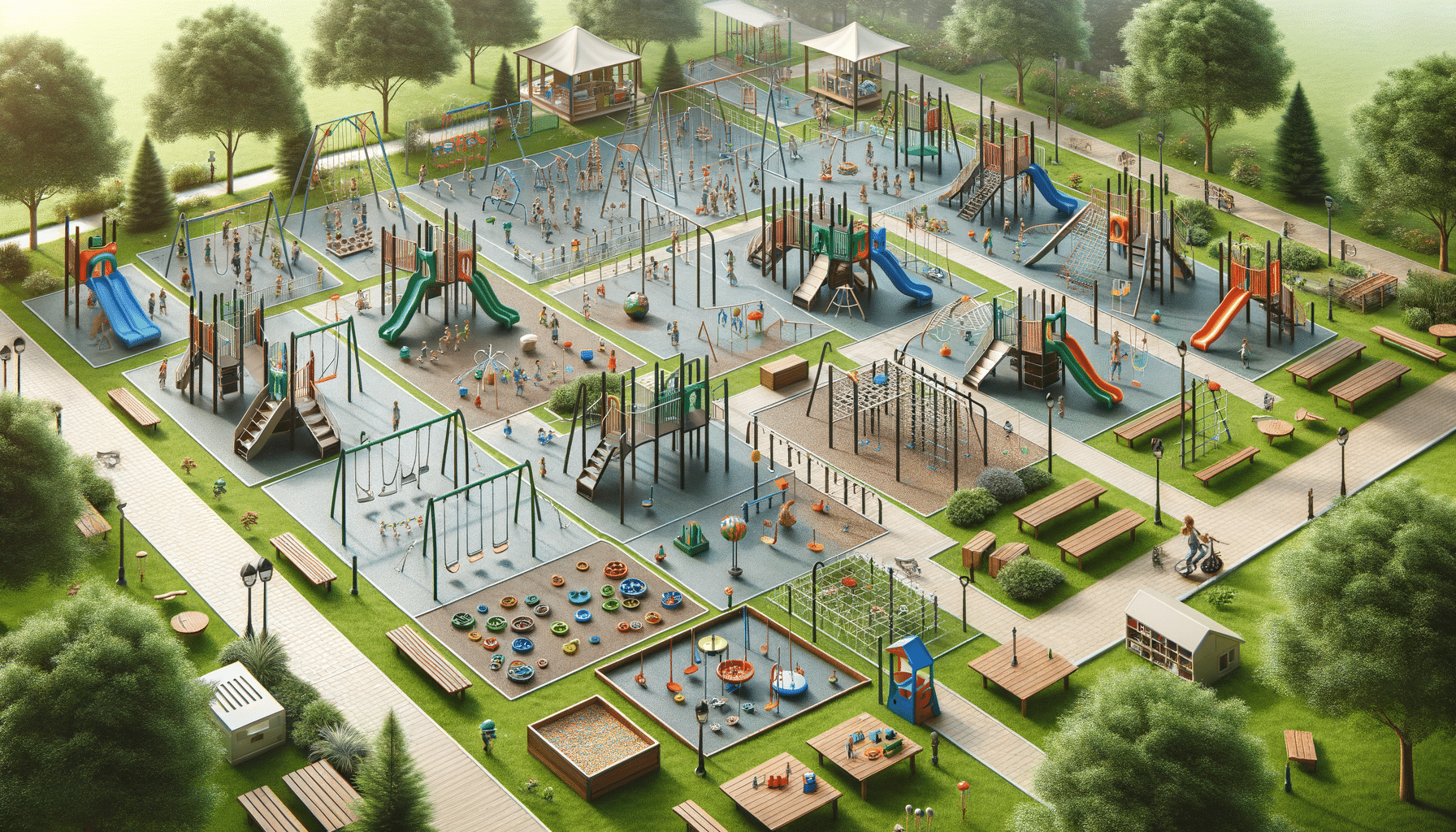
A Guide to Outdoor Fun: Choosing the Ideal Playsets & Gear
Introduction: The Importance of Playground Equipment
Playgrounds are essential in providing children with a space to engage in physical activity, develop social skills, and stimulate their imagination. The right playground equipment can transform any outdoor area into a hub of activity and joy. Whether in schools, parks, or backyards, playground setups must be designed with safety, durability, and fun in mind. This article delves into the various types of playground equipment, focusing on swing sets, and the specific needs of school playgrounds.
Exploring Playground Equipment: Diversity and Functionality
Playground equipment comes in a wide variety of forms, each serving a unique purpose in a child’s play experience. From slides and climbing walls to merry-go-rounds and seesaws, the options are vast and cater to different age groups and interests. The primary goal of playground equipment is to encourage physical activity while ensuring safety and inclusivity. For instance, slides and climbing structures help develop motor skills and coordination, while interactive panels and musical instruments can enhance cognitive abilities.
When selecting playground equipment, it’s crucial to consider the age range of the children who will use it. Younger children may require smaller, safer structures, while older children might seek more challenging equipment. Additionally, incorporating inclusive elements such as wheelchair-accessible ramps and sensory panels ensures that all children, regardless of ability, can enjoy the playground.
Swing Sets: A Staple of Outdoor Fun
Swing sets are a timeless component of playgrounds, offering endless fun and developmental benefits. They provide a soothing, rhythmic motion that can help children relax and focus. Swinging can also improve balance, coordination, and spatial awareness. There are several types of swing sets available, from traditional belt swings to bucket swings designed for toddlers and adaptive swings for children with special needs.
When choosing a swing set, consider the materials used. Metal and wood are popular choices, each with its advantages. Metal swing sets are often more durable and require less maintenance, while wooden sets offer a natural aesthetic and can be customized to fit specific design preferences. Safety is paramount, so ensure the swing set is installed on a soft surface, such as rubber mulch or sand, to cushion falls.
Playground Equipment for Schools: Prioritizing Safety and Learning
School playgrounds play a critical role in the physical and social development of students. They provide a space for children to release energy and interact with peers, promoting teamwork and communication skills. When designing a school playground, safety and educational value should be top priorities. Equipment should be age-appropriate and comply with safety standards to prevent injuries.
Incorporating educational elements into playground equipment can enhance the learning experience. For example, activity panels with numbers, letters, or puzzles can reinforce classroom lessons. Additionally, natural elements like gardens or sandboxes can encourage exploration and creativity. Schools should also consider the playground’s capacity to accommodate all students, ensuring there are enough structures to prevent overcrowding and allow for inclusive play.
Conclusion: Creating Engaging Play Spaces for All
Choosing the right playground equipment is crucial in creating a space that is both fun and safe for children. By considering the diverse needs and interests of children, as well as prioritizing safety and inclusivity, playgrounds can become vibrant centers of activity and learning. Whether in a school, park, or backyard, well-designed playground equipment fosters creativity, physical activity, and social interaction, contributing to the healthy development of children. Investing in quality playground setups ensures that children have a safe and enjoyable place to play and grow.


